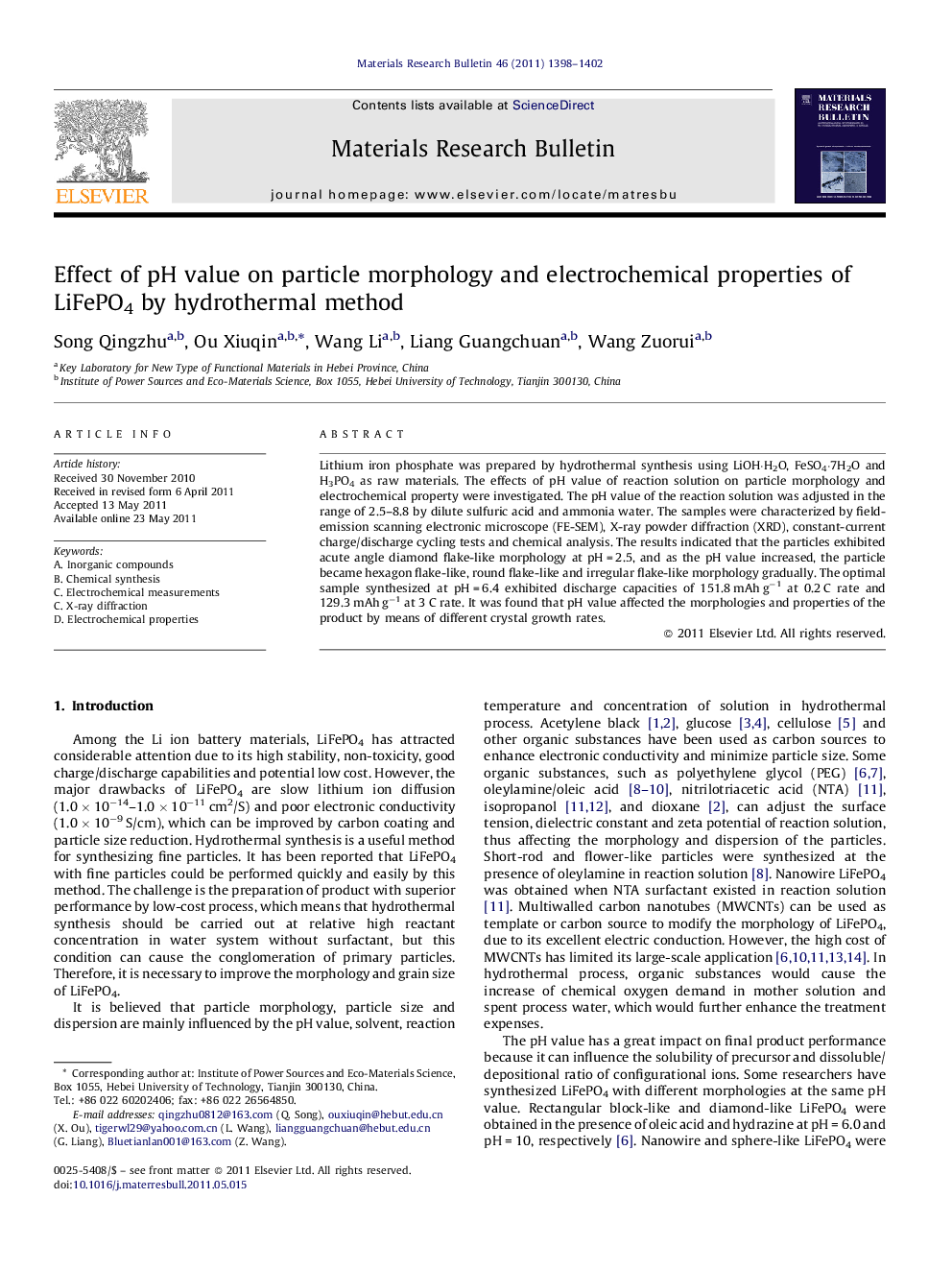| Article ID | Journal | Published Year | Pages | File Type |
|---|---|---|---|---|
| 1490310 | Materials Research Bulletin | 2011 | 5 Pages |
Lithium iron phosphate was prepared by hydrothermal synthesis using LiOH·H2O, FeSO4·7H2O and H3PO4 as raw materials. The effects of pH value of reaction solution on particle morphology and electrochemical property were investigated. The pH value of the reaction solution was adjusted in the range of 2.5–8.8 by dilute sulfuric acid and ammonia water. The samples were characterized by field-emission scanning electronic microscope (FE-SEM), X-ray powder diffraction (XRD), constant-current charge/discharge cycling tests and chemical analysis. The results indicated that the particles exhibited acute angle diamond flake-like morphology at pH = 2.5, and as the pH value increased, the particle became hexagon flake-like, round flake-like and irregular flake-like morphology gradually. The optimal sample synthesized at pH = 6.4 exhibited discharge capacities of 151.8 mAh g−1 at 0.2 C rate and 129.3 mAh g−1 at 3 C rate. It was found that pH value affected the morphologies and properties of the product by means of different crystal growth rates.
Graphical abstractThe pH value of system is adjusted in the range of 2.5–8.8 by using dilute sulfuric acid and ammonia water. The results indicated that the particle exhibits acute angle diamond flake-like morphology at pH = 2.5. With increase of pH value, the particle gradually becomes to round flake-like and irregular flake-like morphology. The optimal sample synthesized at pH = 6.4 exhibits discharge capacities of 151.8 mAh g−1 at 0.2 C rate and 129.3 mAh g−1 at 3 C rate.Figure optionsDownload full-size imageDownload as PowerPoint slideHighlights► The pH value of solution affects greatly on particle morphology. ► The solubility product determined the transition of interphases. ► The disorder of atoms in crystal is affected by pH value. ► LiFePO4 with high capacity could be synthesized at slight acid or neutral conditions.
